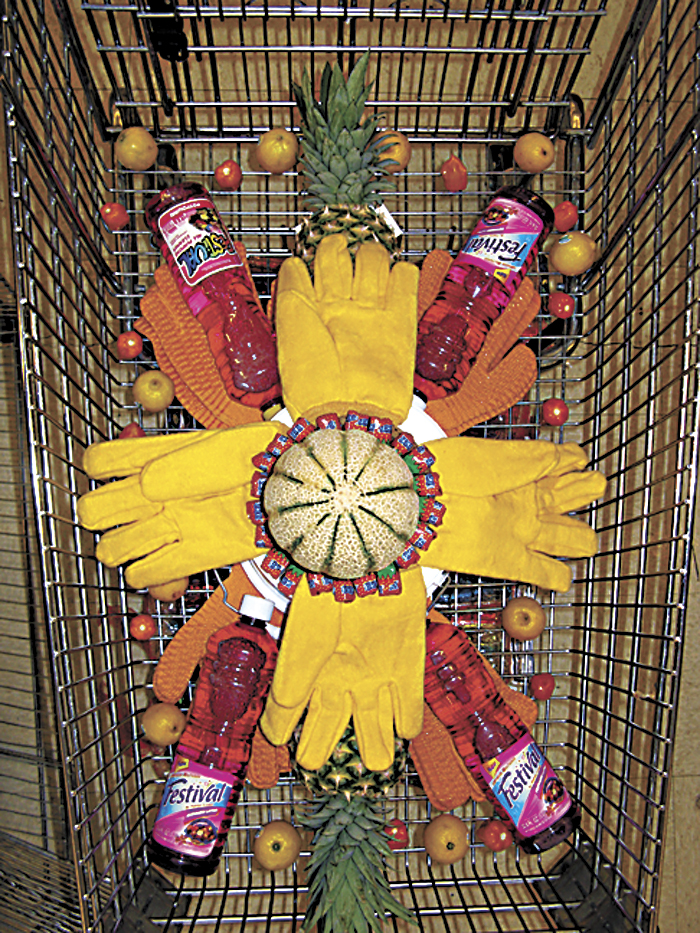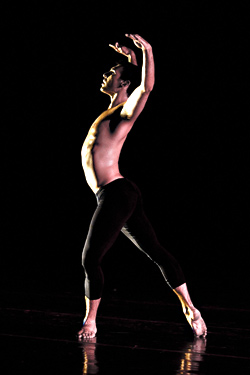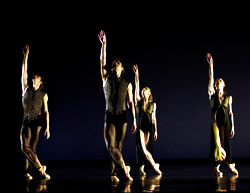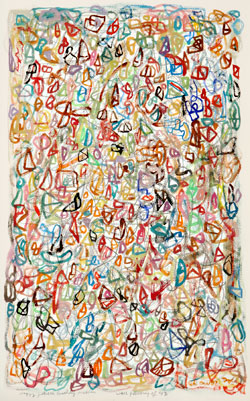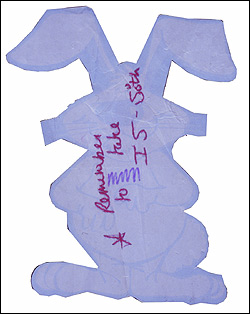This summer, Greg Lundgren put out a call for work in a variety of art genres—including art dealing itself. He then put the submissions through an absolutely random selection process, and awarded an Arbitrary Art Grant of $500 to the winner in each field. Participants could be (at least in theory) practicing artists, dental surgeons, or the guy who sells Real Change on the corner of Third and Seneca while twirling his arms like a whirligig.
Lundgren wants a world in which art and life don’t operate in parallel universes. He’s the founder of the Hideout, the bar/art gallery on First Hill; Lundgren Monuments, a company producing signage and cast-glass memorials; and Vital 5 Productions, an enterprise dedicated to challenging notions of what art is and who should be making it. “I want more art in the world,” he wrote in his introduction to the Vital 5 Cookbook, a clothbound book of instructional art, “and I don’t care if it is good or bad, original or recycled.”
In February, One Reel approached Lundgren about creating an exhibit based on the recipes in his Cookbook. Lundgren countered with Dada Economics, a production that would use half its budget as a cash incentive to engage the public with art. “I wanted to create a populist atmosphere and get as many people involved as possible,” he says.
He got the word out through Facebook, posters on telephone poles, and other means. If many of the applicants who responded were already working artists, they tried dancing instead of painting, or writing instead of performing.
The process went something like this: Participants vying for the $500 Sculpture award, for example, were instructed to assemble a work of art inside a grocery cart using items found in a supermarket. The names of all 86 participants were then written on folded sheets of blue paper, which were dropped onto the floor of the Broadway Market on Capitol Hill and propelled by leaf blower into the remnants of a cracked egg in one of the aisles. The winner was the person whose name was on the sole piece of paper clinging to the mess—Jennifer Budke, a clerk at a Seattle law firm and a WSU grad in Fine Arts (she only got a C+ in sculpture).
Lundgren and his cohorts also cracked open piñatas and fired shots at shoes, in the process giving a raspberry to the granting process—which is based on the premise that by making artist/applicants jump through hoops, and by conducting hours or even days of discussion, an esteemed committee can separate art deserving of merit from art deserving of mockery. Decades ago, artists and musicians started introducing chance into their work, throwing into question the importance of craft and intention. Lundgren has taken that a step further, turning art’s critical reception into a matter of chance as well.
Which it might as well be. Ask a hundred people if they like a given work, and responses are bound to be divided. Even the “best” works—those that have made it through the annals of history and emerged victorious to roost on museum walls—have their detractors. Jeff Koons’ overblown objects may have broken records at auction, but whether they’re trivial kitsch or enduring monuments remains hotly debated even among critics.
Lundgren’s summer-long experiment in the arbitrariness of art appreciation offered an air-guitar version of the grant process. If art insiders could lip-synch the lyrics, art outsiders could strap on an imaginary Stratocaster and rock it on their own terms.
If the guy on the corner of Third and Seneca selling Real Change were to win an arbitrary art grant, would it elevate his spiro-gymnastics from the slightly scary to the realm of performance art? Transform his stack of newspapers into a minimalist sculpture? Five hundred dollars may be your entire rent check or the price of a pair of pumps. But seeing all the world as a stage? Priceless.
